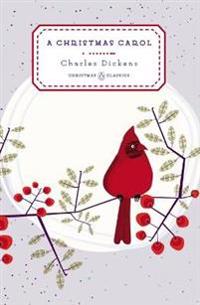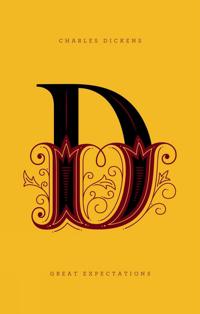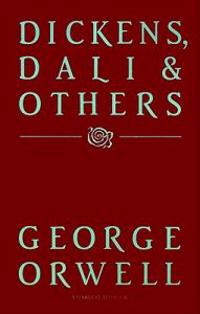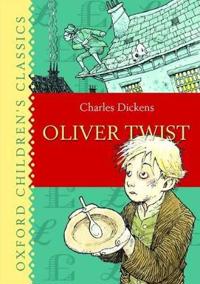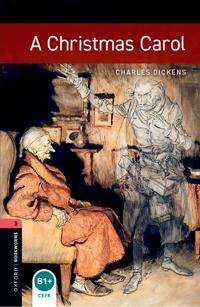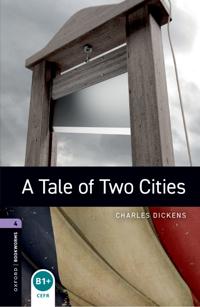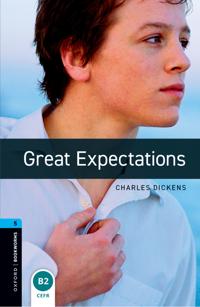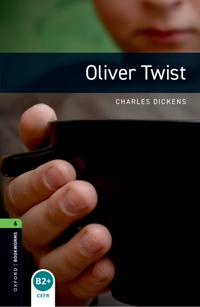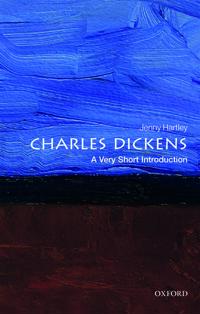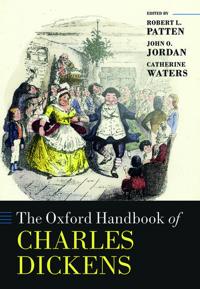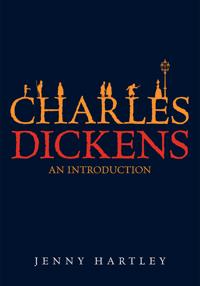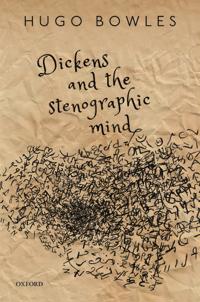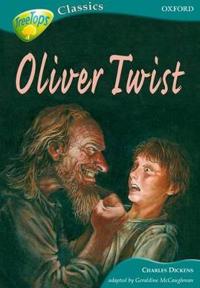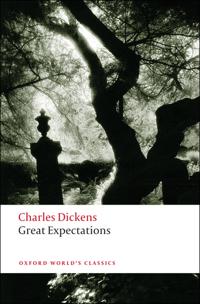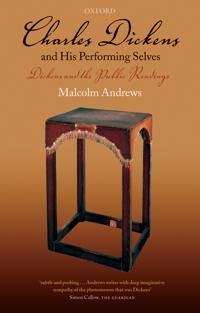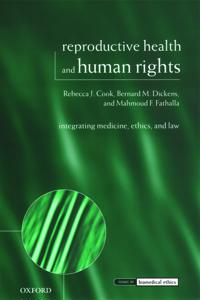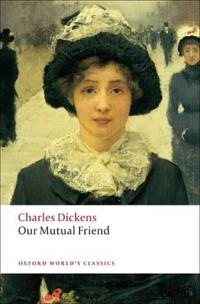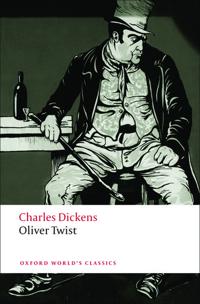A Christmas Carol (Inbunden)
avCharles Dickens
ISBN: 9780143122494 - UTGIVEN: 2014-10A Christmas Carol has had an enduring influence on the way we think about the traditions of Christmas ever since it was first published in December 1843. Dickens' story of solitary miser Ebenezer Scrooge, who is taught the true meaning of Christmas by the three ghosts of Christmas past, present and [...]
A Christmas Carol (Häftad)
avCharles Dickens
ISBN: 9780147512895 - UTGIVEN: 2014-10Ebenezer Scrooge is a mean old man with no friends or family to love him - he's just so miserable and bitter! One freezing cold Christmas Eve, Marley's Ghost pays Scrooge a visit and an eerie night-time journey begins. The Christmas spirits are here to show Scrooge the error if his nasty ways. By vi[...]
Dickens, Dali & Others (Häftad)
avGeorge Orwell, George Crwell
ISBN: 9780156260534 - UTGIVEN: 197010Ten celebrated essays by a man universally regarded as a master of the essay form. Included are such classics as "Charles Dickens," "The Art of Donald McGill," "Boys' Weeklies," "Raffles and Miss Blandish," and "Benefit of Clergy: Some Notes on Salvador Dali."[...]
Oliver Twist (Inbunden)
avCharles Dickens
ISBN: 9780192729668 - UTGIVEN: 201003If you love a good story, then look no further. Oxford Children's Classics bring together the most unforgettable stories ever told. They're books to treasure and return to again and again. When Oliver Twist asks for more food it changes his life for ever. He flees his dreary life in the workhouse[...]
A Christmas Carol (Häftad)
avCharles Dickens, Clare West, Ian Miller
ISBN: 9780194237550 - UTGIVEN: 2007-03This award-winning collection of adapted classic literature and original stories develops reading skills for low-beginning through advanced students.
Accessible language and carefully controlled vocabulary build students' reading confidence.
Introductions at the beginning of each story, illu[...]A Christmas Carol (Häftad)
avCharles Dickens
ISBN: 9780194791137 - UTGIVEN: 200711Christmas is humbug, Scrooge says - just a time when you find yourself a year older and not a penny richer. The only thing that matters to Scrooge is business, and making money. But on Christmas Eve three spirits come to visit him. They take him travelling on the wings of the night to see the shadow[...]
Oxford Bookworms Library: Stage 4: A Tale of Two Cities (Häftad)
avCharles Dickens
ISBN: 9780194791878 - UTGIVEN: 2007-11'The Marquis lay there, like stone, with a knife pushed into his heart. On his chest lay a piece of paper, with the words: Drive him fast to the grave. This is from JACQUES.' The French Revolution brings terror and death to many people. But even in these troubled times people can still love and be[...]
Oxford Bookworms Library: Stage 5: Great Expectations (Häftad)
avCharles Dickens
ISBN: 9780194792264 - UTGIVEN: 2007-12In a gloomy, neglected house Miss Havisham sits, as she has sat year after year, in a wedding dress and veil that were once white, and are now faded and yellow with age. Her face is like a death's head; her dark eyes burn with bitterness and hate. By her side sits a proud and beautiful girl, and in [...]
Oxford Bookworms Library: Stage 6: Oliver Twist (Häftad)
avCharles Dickens
ISBN: 9780194792660 - UTGIVEN: 2007-11London in the 1830s was no place to be if you were a hungry ten-year-old boy, an orphan without friends or family, with no home to go to, and only a penny in your pocket to buy a piece of bread. But Oliver Twist finds some friends - Fagin, the Artful Dodger, and Charley Bates. They give him food an[...]
Charles Dickens in Cyberspace: The Afterlife of the Nineteenth Century in Postmodern Culture (Inbunden)
avJay Clayton
ISBN: 9780195160512 - UTGIVEN: 2003-07-01Oxford Progressive English Readers: Grade 2: Oliver Twist (Häftad)
avCharles Dickens
ISBN: 9780195455410 - UTGIVEN: 2006-10Charles Dickens: A Very Short Introduction (häftad)
ISBN: 9780198714996 - UTGIVEN: 2019-02Charles Dickens is credited with creating some of the world's best-known fictional characters, and is widely regarded as the greatest novelist of the Victorian age. Even before reading the works of Dickens many people have met him already in some form or another. His characters have such vitality th[...]
The Oxford Handbook of Charles Dickens
ISBN: 9780198743415 - UTGIVEN: 2018-10The Oxford Handbook of Charles Dickens is a comprehensive and up-to-date collection on Dickens's life and works. It includes original chapters on all of Dickens's writing and new considerations of his contexts, from the social, political, and economic to the scientific, commercial, and religious. Th[...]
Charles Dickens
ISBN: 9780198788164 - UTGIVEN: 2017-01Charles Dickens is credited with creating some of the world's best-known fictional characters, and is widely regarded as the greatest novelist of the Victorian age. Even before reading the works of Dickens many people have met him already in some form or another. His characters have such vitality th[...]
Dickens and the Stenographic Mind
ISBN: 9780198829072 - UTGIVEN: 2019-02Initially described by Dickens as a 'savage stenographic mystery', shorthand was to become an essential and influential part of his toolkit as a writer. In this ground-breaking interdisciplinary study, Hugo Bowles tells the story of Dickens's stenographic journey from his early encounters with the '[...]
Oxford Reading Tree: Stage 16B: TreeTops Classics: Oliver Twist (Häftad)
avCharles Dickens, Geraldine McCaughrean
ISBN: 9780199184880 - UTGIVEN: 200609These children's classics have been sensitively adapted to enrich your junior pupils' reading. They are part of a structured reading programme for juniors from Oxford Reading Tree, Stages 9-16. They have masses of boy and girl appeal and will introduce your readers to significant authors from the [...]
Great Expectations (Häftad)
avCharles Dickens
ISBN: 9780199219766 - UTGIVEN: 200806'you are to understand, Mr. Pip, that the name of the person who is your liberal benefactor remains a profound secret...' Young Pip lives with his sister and her husband the blacksmith, with few prospects for advancement until a mysterious benefaction takes him from the Kent marshes to London. Pip [...]
Charles Dickens and His Performing Selves (Häftad)
avMalcolm Andrews
ISBN: 9780199236206 - UTGIVEN: 200711Charles Dickens had three professional careers: novelist, journalist and public Reader. That third career has seldom been given the serious attention it deserved. For the last 12 years of his life he toured Britain and America giving 2-hour readings from his work to audiences of over two thousand. T[...]
Reproductive Health and Human Rights (Häftad)
avRebecca J. Cook, Bernard M. Dickens, Mahmoud F. Fathalla
ISBN: 9780199241330 - UTGIVEN: 200304The concept of reproductive health promises to play a crucial role in improving women's health and rights around the world. It was internationally endorsed by a United Nations conference in 1994, but remains controversial because of the challenge it presents to conservative agencies: it challenges p[...]
Other Dickens: Pickwick to Chuzzlewit (Pocket)
avJohn Bowen
ISBN: 9780199261406 - UTGIVEN: 2003-02-20A Tale of Two Cities (Pocket)
avCharles Dickens
ISBN: 9780199536238 - UTGIVEN: 2008-07-15Dickens' second historical novel, which he considered "the best story I have written," provides a highly-charged examination of human suffering and human sacrifice. Private experience and public history paralled one another as the political activities and personal responsibilities of these fictional[...]
Pickwick papers (Pocket)
avCharles Dickens
ISBN: 9780199536245 - UTGIVEN: 2008-05-08In 1836 the 23-year-old Dickens was invited by his publishers to write a monthly something' illustrated by sporting plates. Thus the Pickwick Club was born: its supposed papers' soom outgrew their origins and became a brilliantly comic novel, still among Dicken's most popular works.[...]
Our Mutual Friend (Häftad)
avCharles Dickens
ISBN: 9780199536252 - UTGIVEN: 200811Following his father's death John Harmon returns to London to claim his inheritance, but he finds he is eligible only if he marries Bella Wilfur. To observe her character he assumes another identity and secures work with his father's foreman, Mr Boffin, who is also Bella's guardian. Disguise and co[...]
Oliver Twist (Häftad)
avCharles Dickens
ISBN: 9780199536269 - UTGIVEN: 200805The new Oxford World's Classics edition of Oliver Twist is based on the authoritative Clarendon edition, which uses Dickens's revised text of 1846. It includes his preface of 1841 in which he defended himself against hostile criticism, and includes all 24 original illustrations by George Cruikshank[...]

